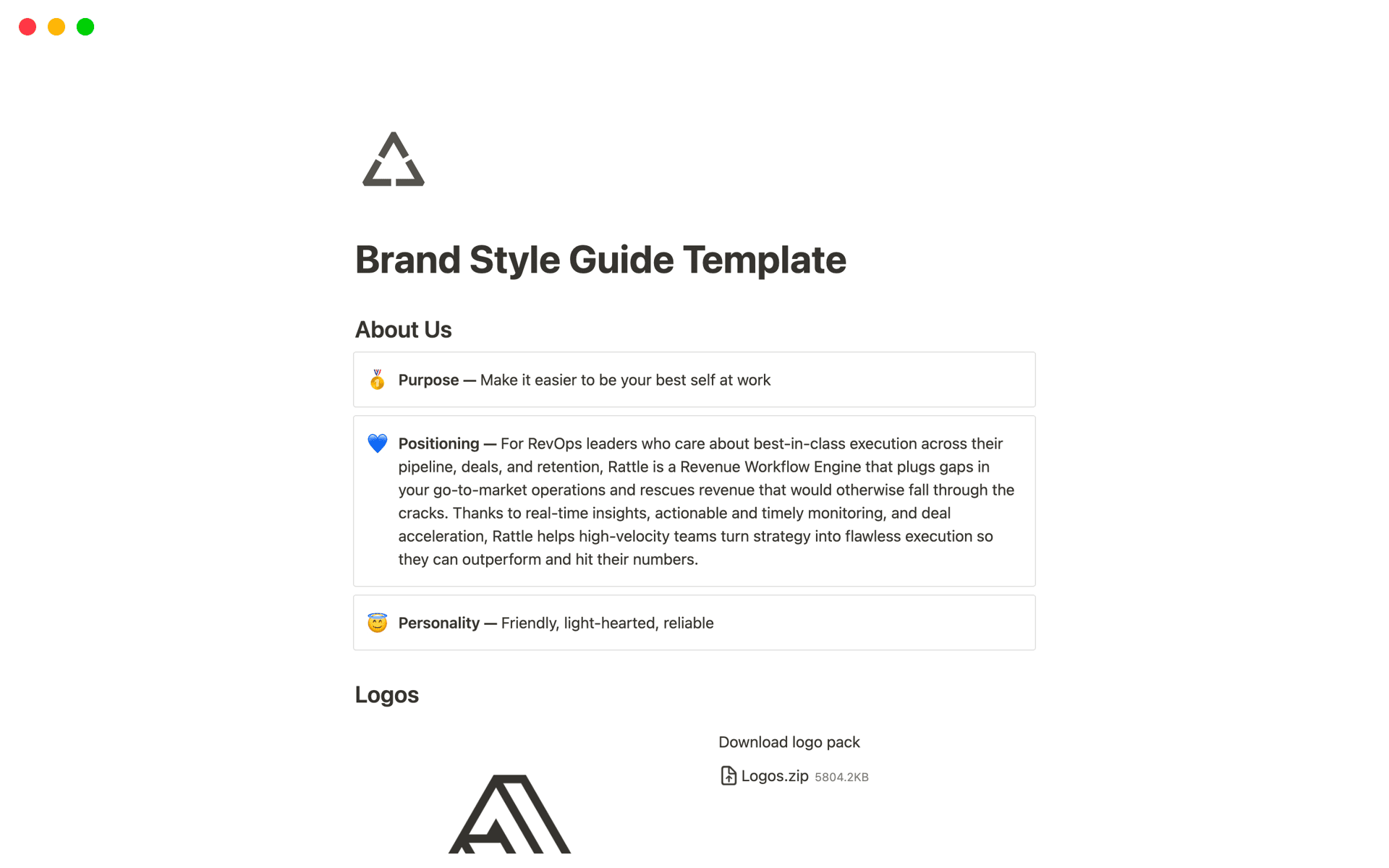Brand guidelines serve as a manual for the presentation and communication of a brand across various platforms, ensuring consistency and coherence in its messaging. They provide a framework that helps maintain the brand's identity, making it recognizable and reliable to its audience. A Brand Guidelines template streamlines this process, offering a structured approach to organize and disseminate these critical elements efficiently.
Before you embark on crafting your own Brand Guidelines template, consider exploring the examples listed below to simplify the process.
What Should Brand Guidelines Templates Include?
Choosing the right Brand Guidelines Template is crucial for maintaining consistency across your marketing efforts. Here's what to look for in a top-notch template:
Logo Usage - Details on how to use the logo, including acceptable colors, sizing, and spacing to ensure brand consistency.
Color Palette - A clear presentation of the brand's color scheme, including specific color codes (RGB, CMYK, Pantone) to maintain visual coherence in all materials.
Typography - Guidelines on the fonts and typography to use in various contexts, which helps in keeping text elements uniform across different platforms and materials.
Voice and Tone - Instructions on the brand’s writing style and tone of voice to be used in communications, ensuring consistency in how the brand sounds to its audience.
Selecting a comprehensive template can significantly streamline your brand management process, ensuring all elements are harmonious and true to your brand's identity.
What Should Brand Guidelines Templates Avoid?
Choosing the right Brand Guidelines template is crucial for maintaining a consistent brand identity. However, some features can hinder rather than help. Here are key elements to steer clear of:
Overly Complex Layouts: Templates with too many intricate design elements can be confusing and detract from the main content. Simplicity is key to clear communication.
Undefined Editable Areas: Avoid templates that do not clearly distinguish between editable and non-editable sections, as this can lead to accidental modifications of critical elements.
Non-Scalable Content: Ensure the template can grow with your brand. Avoid those that cannot accommodate additional sections or updates as your brand evolves.
Selecting a template that avoids these pitfalls will ensure it serves as a helpful tool rather than a hindrance in your branding efforts.













